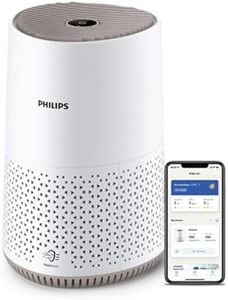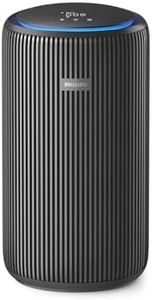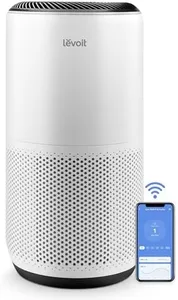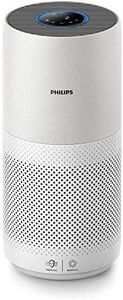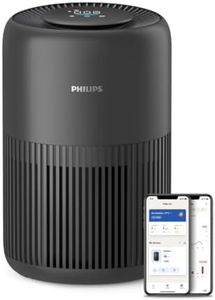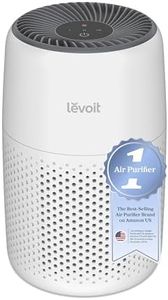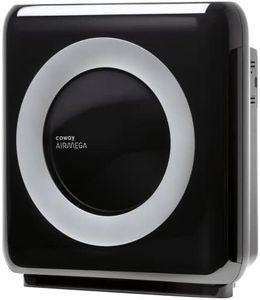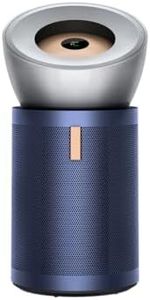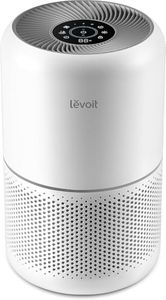We Use CookiesWe use cookies to enhance the security, performance,
functionality and for analytical and promotional activities. By continuing to browse this site you
are agreeing to our privacy policy
10 Best Air Purifiers For Allergies
From leading brands and best sellers available on the web.Buying Guide for the Best Air Purifiers For Allergies
Choosing the right air purifier for allergies means focusing on how well it can remove allergens such as pollen, dust, pet dander, and mold from your indoor air. The main goal is to find a unit that not only traps these particles efficiently but also circulates air throughout the room properly. Before getting started, consider where you'll use the purifier (bedroom, living room, or multiple spaces) and how sensitive you are to allergens. Look for devices that are easy to maintain because you’ll need to change filters regularly. Understanding the key features can make a big difference in your comfort and allergy relief.Filter TypeThe filter is the core of any air purifier and determines what kind of particles the device can remove. The most important type for allergy sufferers is the HEPA filter, which stands for High-Efficiency Particulate Air. This filter can trap extremely small particles, including most allergens. There are also devices with carbon or charcoal filters, which mainly help with odors and gases but are less effective for common allergens. Navigating your options: True HEPA filters capture 99.97% of particles 0.3 microns in size and are best for allergies, while 'HEPA-type' or 'HEPA-like' filters don’t meet the same standards. Always look for ‘True HEPA’ for allergies. If your main concern is dust, pollen, and pet dander, pick a purifier with a True HEPA filter.
Coverage AreaCoverage area tells you how large a space the air purifier can effectively clean, usually given in square feet. This is important because a purifier that’s too small for your space won’t clean the air effectively. Values are typically broken down into small (up to 150 sq. ft.), medium (150-350 sq. ft.), and large rooms (over 350 sq. ft.). To pick the right one, measure your room and choose a purifier rated for that size or slightly bigger, so you get the best performance.
CADR (Clean Air Delivery Rate)CADR reflects how quickly and effectively the device removes three main particles from the air: dust, pollen, and smoke. The higher the CADR number, the faster it can purify air. You’ll find typical values from around 50 to over 350 depending on the model and room size. For allergies, the higher the better—match the number to your room size for dust and pollen especially, since those are the main triggers. Check the product’s CADR ratings and pick one with higher numbers for the best allergy relief in your space.
Noise LevelNoise level is how loud the purifier sounds when it’s working. This is measured in decibels (dB); lower numbers mean quieter operation. Some air purifiers are whisper-quiet (under 30 dB), some have a gentle background hum (30-50 dB), and a few are more noticeable (50+ dB) at higher settings. If you’re sensitive to noise or plan to use the purifier in a bedroom or office, look for models with a quiet or ‘sleep’ mode so the sounds won’t disturb you.
Maintenance and Filter ReplacementThis describes how often you’ll need to replace the filters and how easy it is to do so. Most HEPA filters need changing every 6-12 months, while pre-filters (which catch larger particles and protect the main filter) may need cleaning more often. It’s important to keep up with maintenance for the purifier to work well. Check how simple it is to replace the filter and look for models with filter change indicators, which remind you when it’s time. If you prefer less hassle, pick a purifier with a straightforward system and easily available filters.



